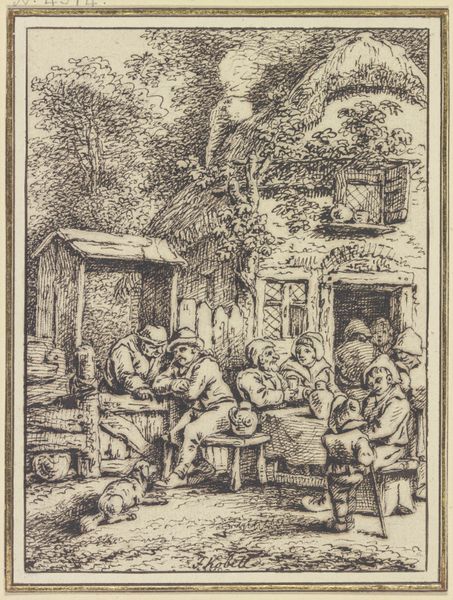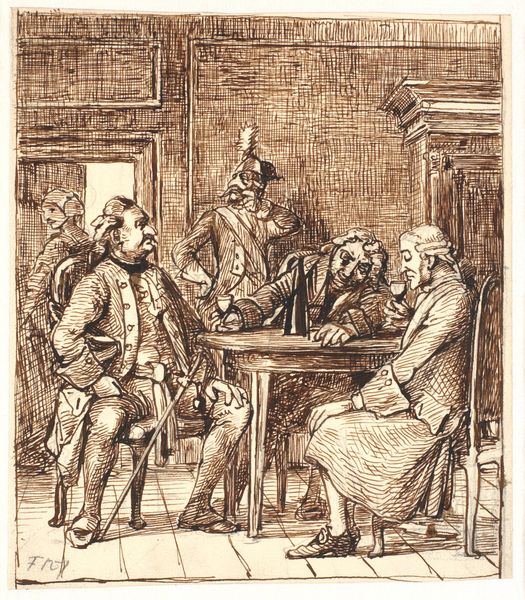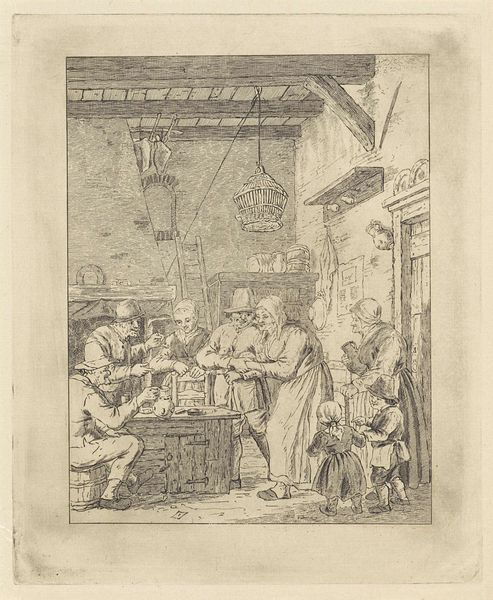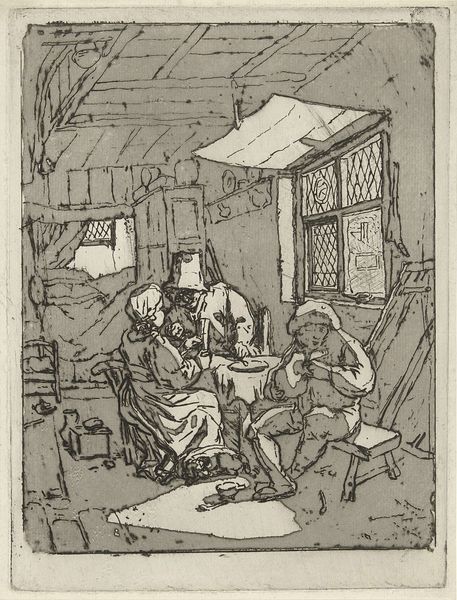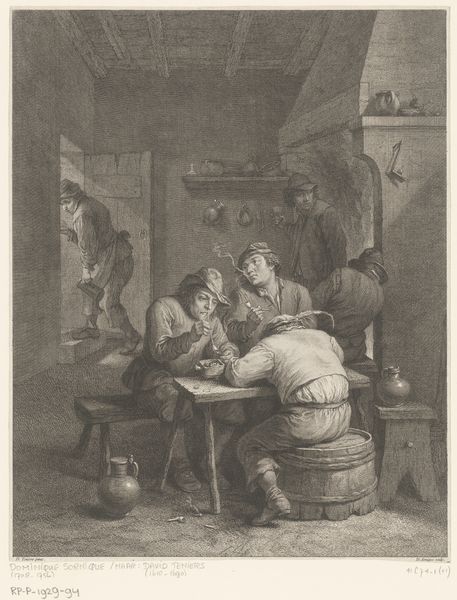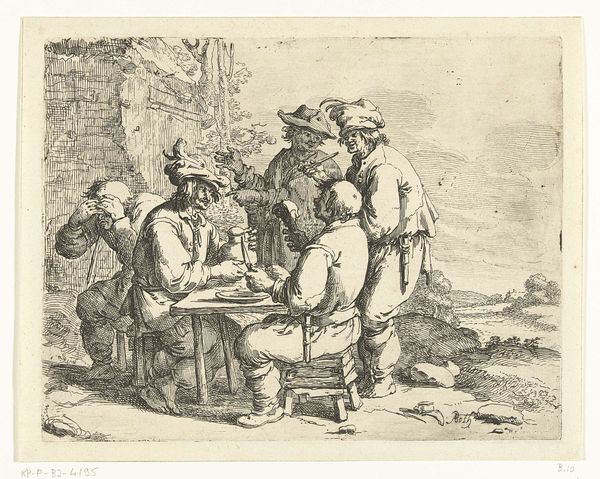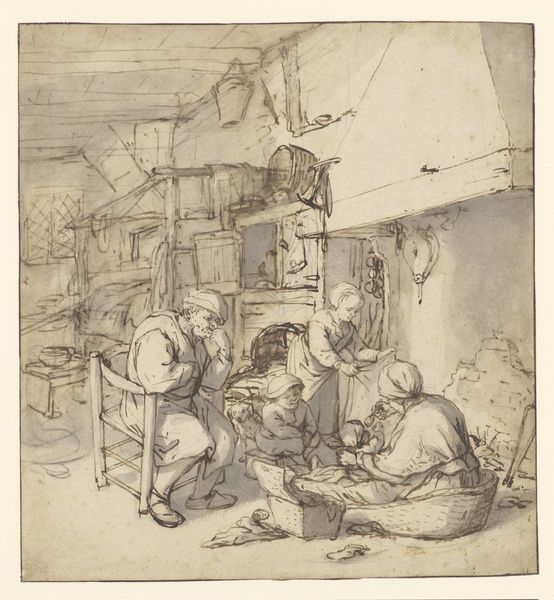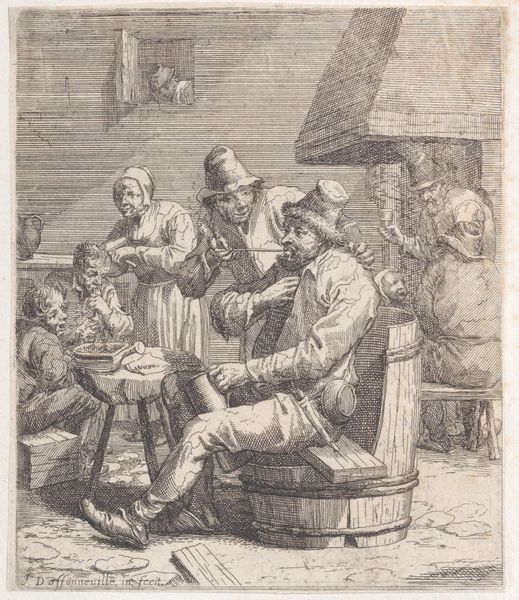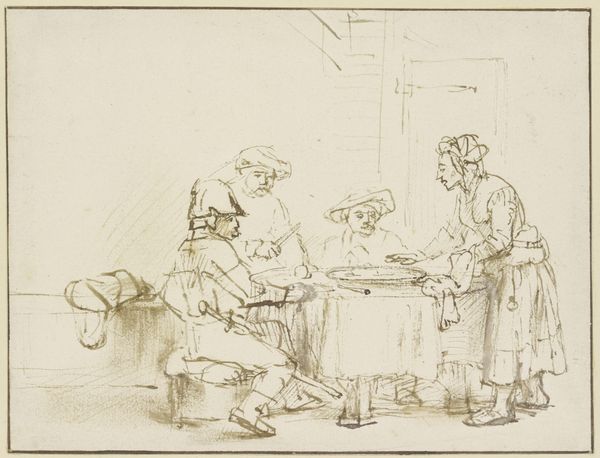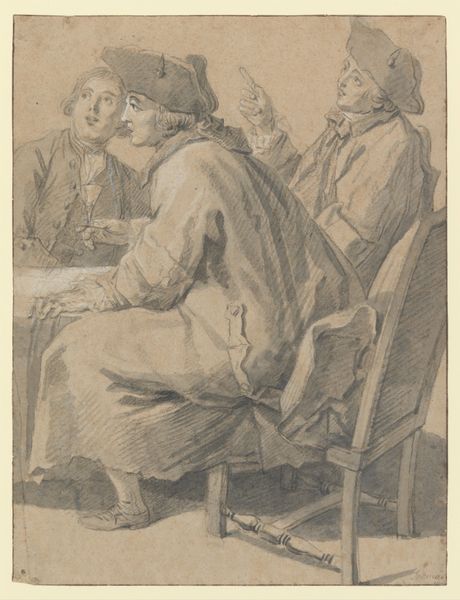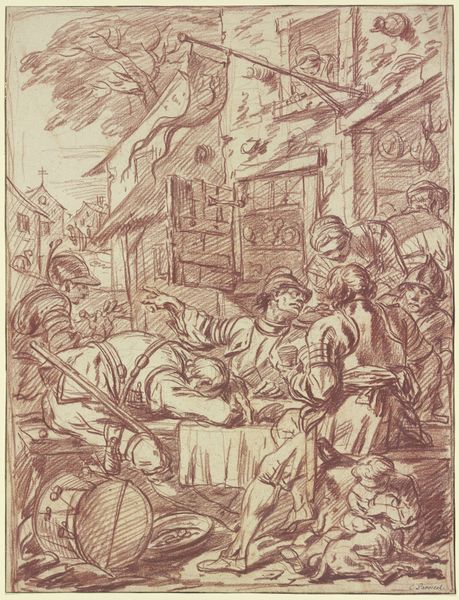
Interieur van een boerenherberg met rokende en drinkende figuren 1670 - 1704
0:00
0:00
drawing, ink, pen
#
portrait
#
drawing
#
dutch-golden-age
#
figuration
#
ink
#
pen
#
genre-painting
Dimensions: height 228 mm, width 203 mm
Copyright: Rijks Museum: Open Domain
Curator: This drawing, "Interior of a Peasant Inn with Smoking and Drinking Figures," attributed to Cornelis Dusart and dated sometime between 1670 and 1704, offers a glimpse into everyday life during the Dutch Golden Age. It's rendered in pen and ink, giving it a lively, almost sketch-like quality. Editor: It feels intimate, but also… grimy? The atmosphere is palpable; I can almost smell the stale beer and pipe tobacco. The contrast between light and shadow emphasizes the figures huddled together, creating a sense of enclosed community. Curator: Precisely! The medium, pen and ink, facilitates the efficient and economical reproduction of images, thus reaching a wide audience of potential buyers within a developing and competitive art market of the time. The cross-hatching, especially, allows for subtle gradations that mimic tonal effects usually achieved with chalk or washes. Editor: And what's striking is how the figures seem almost suspended between states of activity and inertia. Notice how much material and process are brought forth: the lines aren't about flawless representation. Instead, the scratchy quality gives us insight into labor that makes it real. The hunched postures, the blurred edges, all suggesting a casualness. This piece gives attention to social documentation more than technical finesse. Curator: The inn itself, a focal point of social life, played a crucial role in disseminating information and solidifying communal bonds. Depictions like these reinforced the idea of shared cultural experiences within Dutch society. We observe this sense of 'gezelligheid', or coziness and camaraderie that were central to Dutch identity at the time. Consider also the political subtext: were these merely genre scenes or subtle commentaries on social behavior? Editor: Well, and who exactly commissioned and then consumed these kinds of images? It tells a story of artistic accessibility and affordability; unlike grand oil paintings commissioned by the wealthy elite, smaller ink drawings circulated through a more varied network. I wonder what the laborers themselves made of seeing their likeness circulated? What did it do to their identity? Curator: Dusart provides us with an invaluable window into the world of everyday Dutch life. The artistic method is also an insight: by looking at its strokes, we appreciate the time and culture involved with it, while thinking of it less as simply an aesthetic piece, and rather something deeper with meaning to pull out and digest. Editor: I agree. It's in its material simplicity, that this pen-and-ink work gains profound resonance, echoing conversations, laughter, and quiet moments of contemplation.
Comments
No comments
Be the first to comment and join the conversation on the ultimate creative platform.
